Rotary International President for 2022-23, Jennifer Jones, wants Rotarians to imagine the possibilities in the change they can make to transform the world.




Rotary International President, Shekhar Mehta, India District 6330 Governor, Erin Shankie Club President, Joyce Nolin-Capman (2021-22)
Jones, a member of the Rotary Club of Windsor-Roseland, Ontario, Canada, urges us all to dream big and harness our connections and the power of Rotary to turn those dreams into reality.


January 2023 - D6330 , 2020 Page 1 An onehttps://issuu.com/ladykitt/docs/march_newsletter_2021
Imagine, a world that deserves our best, where we get up each day knowing that we can make a difference.”
TABLE OF CONTENTS
Topic Page No.1


TRF TRUSTEE CHAIR’s January Message 3 JANUARY FOCUS – VOCATIONAL SERVICE 4 FOUNDATION MOMENT 6 DISTRICT GRANTS CHAIR, Myrna Inglis 8 SPECIAL ROTARIAN 9 WHAT HAPPENS WHEN YOU GIVE 10 INSPIRING PROJECTS 11 ROTARY STRUCTURE 12 POLIO NOW 13 A Step Back 14 Misinformation 16 Final Push 17 PAUL HARRIS SOCIETY 18 ROTARY INTERNATIONAL PRESIDENT-ELECT 19 ROTARY’S BEGINNING - continued 20 THE ROTARY FOUNDATION 22 Guide to Funding Model 23 GETTING TO KNOW THE TRUSTEES 25 JOHN HEWKO 26 UKRAINE & ROTARY 27
TRF -Ways to give 28 AREAS OF FOCUS 29 WHERE THE NEED IS GREATEST 30 FEBRUARY THEME – Peace and Conflict Prevention/Resolution 30 ROTARY’S CORE VALUES 31 OBJECT OF ROTARY & FOUR-WAY TEST 32 EREY – Every Rotarian Every Year / Bequest Society 33
For the latest polio information, click here Click here to make yourself smile! 1 Editor Kitty Bucsko
January 2023 - D6330 , 2020 Page 2
THE ROTARY FOUNDATION
TRUSTEE CHAIR'S MESSAGE – JANUARY 2023
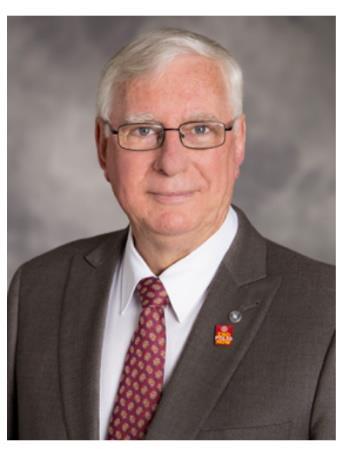
New Beginnings, New Opportunities to Serve
A new year is upon us. As we look forward to new beginnings and experiences, let’s think outside the box and find new opportunities to serve through Rotary.
Consider taking up a community economic development project this year. In this Rotary area of focus, we apply our professional experience by promoting the entrepreneurial spirit as we help communities help themselves in a sustainable way. Community economic development projects, to paraphrase the universal adage, don’t just give someone a fish today but teach them to fish so they can eat for a lifetime.
These projects can be microloans to start up a livestock breeding business, or they might take the adopt-a-village approach in which Rotary works with communities on multipronged efforts to boost local economies sustainably.
In 2000, during its transition to independence, Timor-Leste was reeling from political violence and destruction. Communities not only needed shelter and improved living conditions but also a new economy.
This is where Australian Rotary clubs stepped up with the East Timor Roofing project to produce and install corrugated roofing, and later, water tanks and grain silos. As the project grew, other organizations joined, including The Rotary Foundation, which delivered a grant that set the project on its path to success.
Before long, East Timor Roofing became a financially viable enterprise, raising enough money to build roofs for homes, schools, orphanages, and commercial buildings. Subsistence farmers got silos for their crops. Hundreds of Timorese received professional training in basic building and administrative skills. Thousands of new water tanks ensured that young girls could attend school rather than fetching water.
What began as a roofing project is today a commercial enterprise employing local people and making a huge impact. And your Foundation paved the way.
What experiences lie ahead for you in 2023? A district or global grant? Or possibly a visit to Melbourne, Australia, just up the road from my home, to make new friends, reunite with old ones, and find partners for projects during the 2023 Rotary International Convention?
Let’s make a New Year’s resolution to take advantage of opportunities to learn, grow, and serve. And let’s have some fun in the process. This is Rotary, after all.
So, my friends, let us go forth and carpe annum – seize the year!
IAN H. S. RISELEY Foundation Trustee Chair
January 2023 - D6330 , 2020 Page 3
JANUARY FOCUS on VOCATIONAL SERVICE through THE ROTARY FOUNDATION

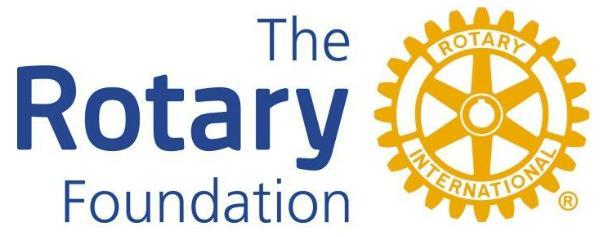
Vocational Service – Five ways2
Here are five ways you can incorporate Vocational Service in your club activities:
1. Host a club meeting at your workplace and share about your profession; take time to learn about fellow members’ occupations.
2. Use your skills and expertise to serve a community.
3. Practice your profession with integrity and inspire others to behave ethically through your words and actions.
4. Work with local businesses to create mentorship, internship, or practicum opportunities to help young people achieve their career goals.
5. Guide and encourage others in their professional development. Below is an example of Vocational Service in Action.
January is Vocational Service Month. This is an opportunity to think about how your club and district engages fellow Rotary and Rotaract members through their professional skills or vocations, and how they bring Rotary’s ideals into their workplace. 2Rotary Service Blog
January 2023 - D6330 , 2020 Page 4
USING YOUR PROFESSIONAL EXPERTISE FOR SERVICE (https://rotaryserviceblog.org/2022/01/11/use-your-professional-expertise-for-service/)
– by Rotary Service & Engagement Staff
Posted on January 11, 2022 by rotaryservice
In bringing together people from diverse professions and backgrounds, Rotary recognizes the importance of all skills and occupations.
In Rotary, your professional life and vocational service can work together. Members have a responsibility to represent their occupations within their club and to exemplify the ideals of Rotary in their workplace.
Above - Rotary members in Switzerland founded Rotarians for the Professional Integration of Youth Refugees (ROBIJ), an apprenticeship program pairing young people who arrived as refugees with local trade businesses looking for skilled workers.
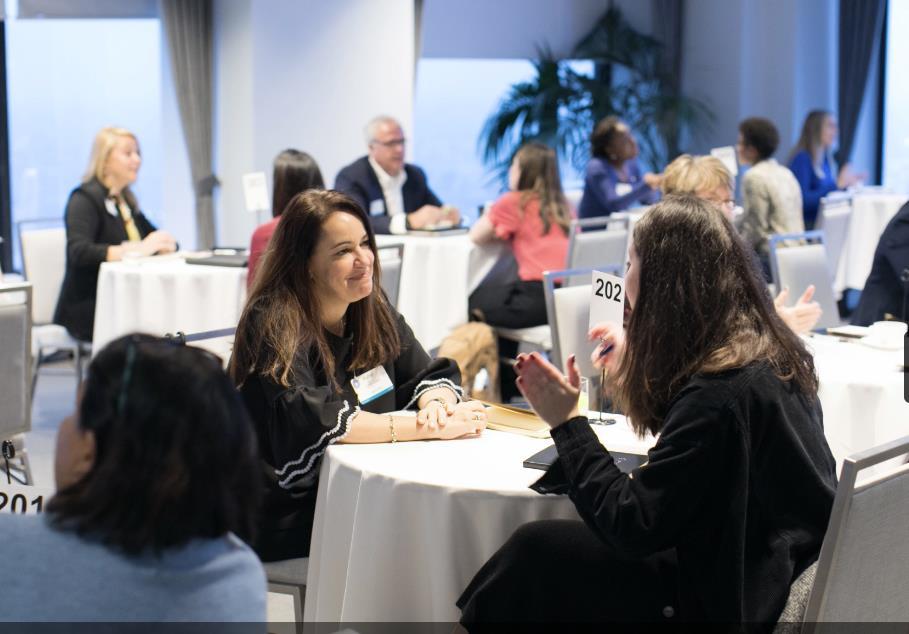
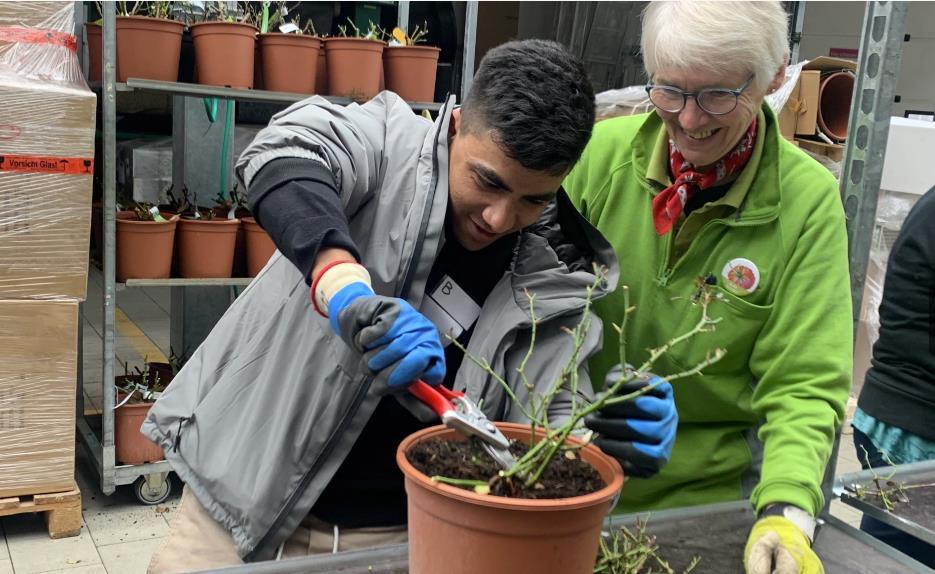
This month, consider how you can bring the idea of vocational service to life. Consider:
1. Using your skills to serve a community.
2. Sharing your expertise.
3. Connecting with others.
4. Helping young professionals achieve their career goals.
Click here to read and learn more from this article.
January 2023 - D6330 , 2020 Page 5
Above - Career mentors connected with professional women from the Chicagoland area to discuss using leadership skills to resolve issues in the workplace and in the community during a Rotary-sponsored speed mentoring event in Chicago, Illinois, United States.
WHAT KIND OF MEMORIAL AND TRIBUTE GIFTS ARE POSSIBLE?

You can honour a loved one in a meaningful way with a contribution to The Rotary Foundation that helps sustain our efforts around the world.
The easiest way is to start at rotary.org/donate and select the option to make a donation in honour or, or in memory of, a loved one. You can contribute to the Annual Fund-SHARE, the World Fund, the Endowment, PolioPlus, the Disaster Response Fund, a specific area of focus, or a global grant.
As the donor, you’ll receive a gift credit and a tax receipt (where applicable.) The person you are honouring or their family, can be notified of your gift by email, or you can choose to print a notification and deliver it yourself.
Consider making a gift to The Rotary Foundation today to honour someone you love.
HOW DOES THE ROTARY FOUNDATION RECOGNIZE ROTARY CLUBS?

Donations to the Foundation are essential to securing and expanding our programs throughout the world. We recognize with gratitude clubs that make extraordinary contributions.
• 100% Paul Harris Fellow Club
These are clubs in which all dues-paying members are Paul Harris Fellows. The club receives a banner. This is a one-time recognition, but the intent is that the club will maintain its status.
January 2023 - D6330 , 2020 Page 6
• 100% Foundation Giving Club
This banner is given to clubs that have an average of US$100 in per capita giving and in which every duespaying member donates at least $25 during the year to the Annual Fund, PolioPlus, the Endowment, or approved global grants.
• Every Rotarian, Every Year Club


This banner is awarded to clubs that have a minimum Annual Fund contribution of $100 per capita during the year and in which every dues-paying member personally contributes at least $25 to the Annual Fund in that time period.
WHAT IS A PAUL HARRIS SOCIETY MEMBER?
The Paul Harris Society recognizes people who commit to contributing US$1,000 or more each year to the Annual Fund, PolioPlus, or an approved global grant.
The society’s purpose is to honor and thank people for their generous and ongoing support of The Rotary Foundation. Paul Harris Society contributions count toward several different kinds of individual recognition, and members receive a chevron-style pin and a certificate.
Members are also listed in the Paul Harris Society Report.
HOW DOES THE ROTARY FOUNDATION USE DONATIONS?
The Rotary Foundation transforms charitable contributions into programs that fight polio and build peace, into humanitarian projects that change lives, and into scholarships and vocational training. The funds are also used for local projects that Rotary members feel passionate about.
As a global organization that operates in nearly every country, Rotary takes stewardship of its funds seriously and we’ve received a four-star rating from Charity Navigator for 14 years in a row.
The Rotary Foundation Cadre of Technical Advisers helps ensure that grant funds are spent properly.
In addition, trained members oversee the use of funds at the club and district level.
Find financial details and stories about how donations are used in the most recent Annual Report
January 2023 - D6330 , 2020 Page 7
Will you help your club be recognized by the Foundation this year?
News from the District 6330 Grants Chair – Myrna Inglis
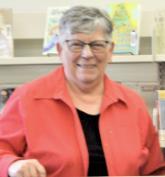
WOW! It is 2023 already! Time to Start the Cycle for District Grants in 23-24.
Members completing the Qualification Course, Club Executives signing the MOU, Clubs selecting a project and writing a proposal before May 31, 2023 - All this provides many opportunities to investigate both local and international projects.
When you are looking, please check out the projects listed in the Foundation drop-down menu. After seeing the range of projects, I am convinced that your Club can find new ways to DO GOOD IN YOUR WORLD.
The district website has a new look with all the resources for The Rotary Foundation in the drop-down menu.
Of the 2022-23 District Grants,
• 9 are still Under Review, which means that the applications need to be completed ASAP and reviewed.
• 19 have been Approved with the members now actively engaged in completing the work over the winter and early spring.
• 4 projects were Cancelled for various reasons
• One was Rejected as it did not fit the criteria for a District Grant.
• One grant has been Funded.
Some reminders about the grants:
1. The maximum grant per Club is $2,000 USD per Year
2. The grant allowance is $.50 per $1.00 of Club-raised funds.
3. The Budget is the Budget and doesn’t get changed. The project expenses are reported in the Financial Section of the Individual Project Report or Final Report
4. A larger project can have 2 or more Clubs working together. Each Club brings their District Grant allowance to the project’s budget. The good news is that only one Club needs to do the grant paperwork.
We are looking forward to a busy winter and spring as current District Grant projects are completed, reviewed and funded while members qualify for the next cycle of projects and new proposals are received and reviewed.
Thanks for the hard work of the many members involved with these projects.
Myrna Inglis
minglis65@hotmail.com
January 2023 - D6330 , 2020 Page 8
Myrna Inglis
WHEN YOU DONATE TO TRF
Thank you to everyone in D6330 who has given to the Foundation, who has participated in a Foundation project, or has helped spread the word about the Foundation. Thank you!
Click here to view a short video about your contributions to TRF and the good that you do! We’re changing lives through our vision and unwavering commitment, bringing hope to those who need it most.
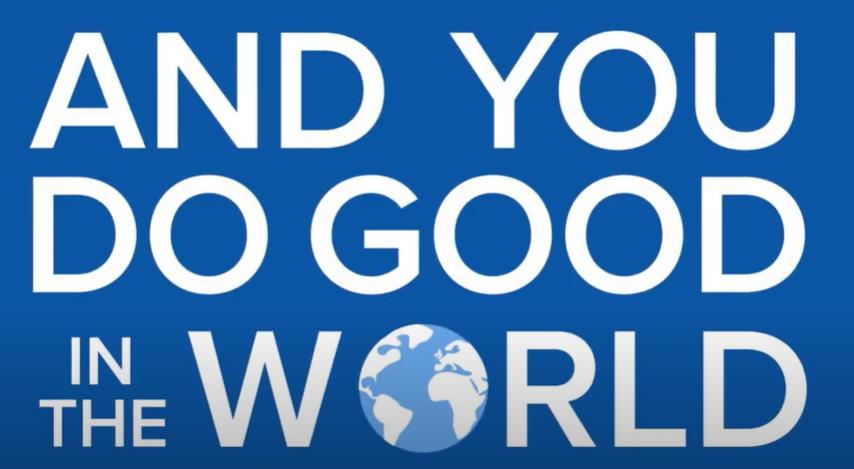
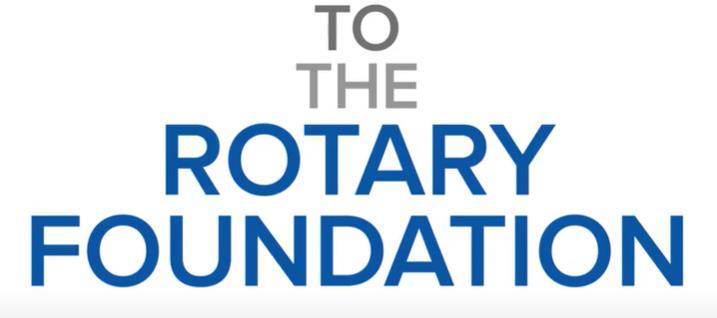


January 2023 - D6330 , 2020 Page 9

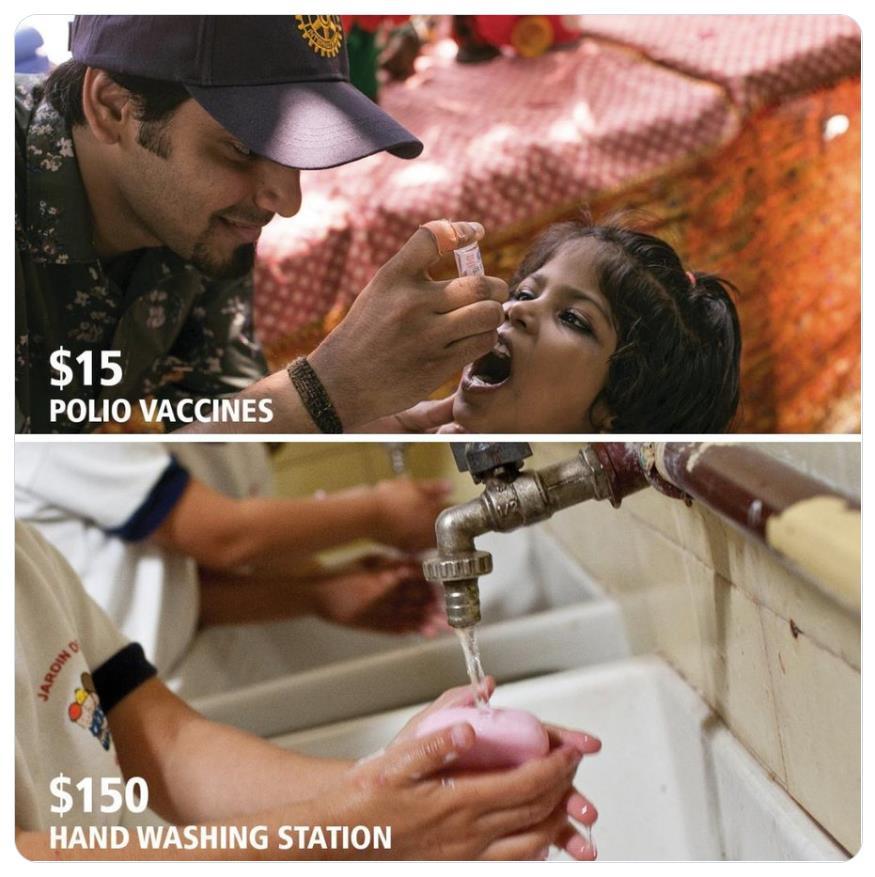
January 2023 - D6330 , 2020 Page 10
ROTARY CLUBS HAVE INSPIRING PROJECTS AND STORIES
Each year in the U.S., people throw away some 8 million tons of glass, a bulky part of landfills that can last ages. The Environmental Protection Agency reports that only about a third of glass that Americans buy gets recycled.

The Rotary Club of Chelan, Washington, found an opportunity to mine some of that glass out of the waste stream.
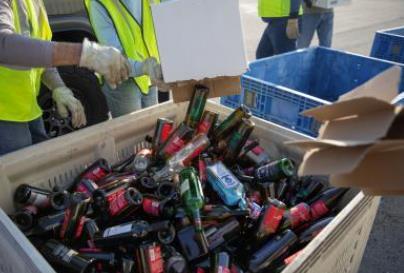
Its 911 Glass Rescue project turns used bottles and broken glass back into sand that can be used in gardening, landscaping, playgrounds, and biological water filter projects.
The club partnered with local agencies and businesses to buy a glass pulverizing machine from Andela Products. Company President and CEO Cynthia Andela is not just a glass industry expert; she also happens to be a member of the Rotary Club of Richfield Springs, New York. "I've been a Rotarian for years, and I've been selling these machines for years," says Andela. "But this Chelan club project, which unites both worlds, made me realize just how much Rotary can do."
Club members told us the story of how they make sand from unwanted glass. Click here to read the rest of the story and get inspired!

Lake Chelan Rotary is part of a global network of 1.2 million neighbors, friends, leaders, and problem-solvers who see a world where people unite and take action to create lasting change – we are active across the globe, in our community, and in ourselves. Lake Chelan Rotary was chartered in 1926.
Solving real problems takes real commitment and vision. For more than 110 years, Rotary’s people of action have used their passion, energy, and intelligence to take action on sustainable projects. From literacy and peace to water and health, we are always working to better our world, and we stay committed to the end.
January 2023 - D6330 , 2020 Page 11
STRUCTURE OF ROTARY
Rotary is made up of three parts: our clubs, Rotary International, and The Rotary Foundation. Together, we work to make lasting change in our communities and around the world.

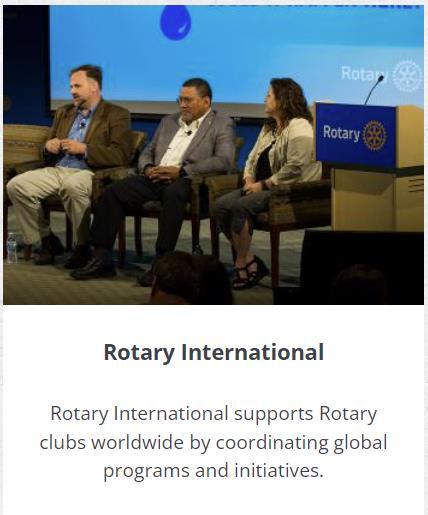
Click each graphic below to learn more.
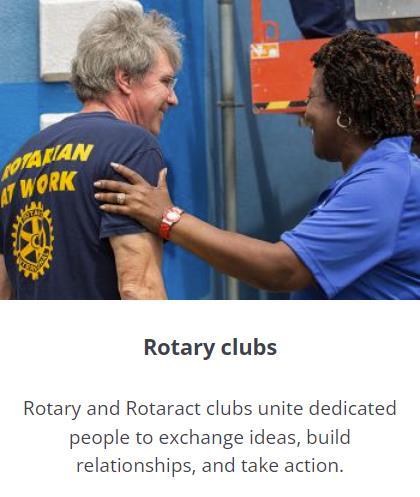
January 2023 - D6330 , 2020 Page 12
Summary of new polioviruses this week:

• Pakistan: one WPV1 positive environmental sample
• Nigeria: one cVDPV2 positive environmental sample
• Sudan: one cVDPV2 case

• Yemen: one cVDPV2 case
For more information, click here - http://polioeradication.org/polio-today/polio-now/this-week/


Click here to learn the difference between Wild Polio Virus (WPV) and Vaccine-derived Polio Virus. (VDPV)

January 2023 - D6330 , 2020 Page 13 T
From the Bill Gates’ Notes - https://www.gatesnotes.com/About-Bill-Gates/The-Year-Ahead-2023#ALChapter5
I’ve written in previous letters (such as this one) about how close the world is to eradicating polio, and what a magical moment in history it will be when we do. Unfortunately, COVID, extreme weather, and war have made it much harder for vaccinators to do their jobs.
Between 2019 and 2021, coverage for all childhood vaccines, including the one for polio, dropped by the biggest margin in almost three decades, and not surprisingly, polio started coming back In 2021, it paralyzed just six children in the entire world; this year, 30 children were paralyzed as of December 6. In Pakistan alone, 20 children have been paralyzed, up from just one last year.
After several years of being limited to Afghanistan and Pakistan, wild poliovirus traveled to two countries in Africa this year. And strains of a variant polio virus were found in the sewers of London and New York. In each of these places, governments had to launch new efforts to stop the disease.
There could not be a better reminder that polio anywhere is a threat everywhere, and that we need to eradicate it. Of course, saying something is necessary doesn’t mean that it’s possible. I’ve underestimated this disease before, and I’ve been naïve about how difficult eradication would be, so I have to acknowledge that it could fail. But I don’t think it will.
Earlier this year, ten eminent scientists and health experts made the case for both why this disease should be eradicated, and why it can be eradicated, in the 2022 Scientific Declaration on Polio. This declaration is supported by more than 3,000 signatories from 117 countries. It’s short (much shorter than this letter), to the point, and well worth your time.
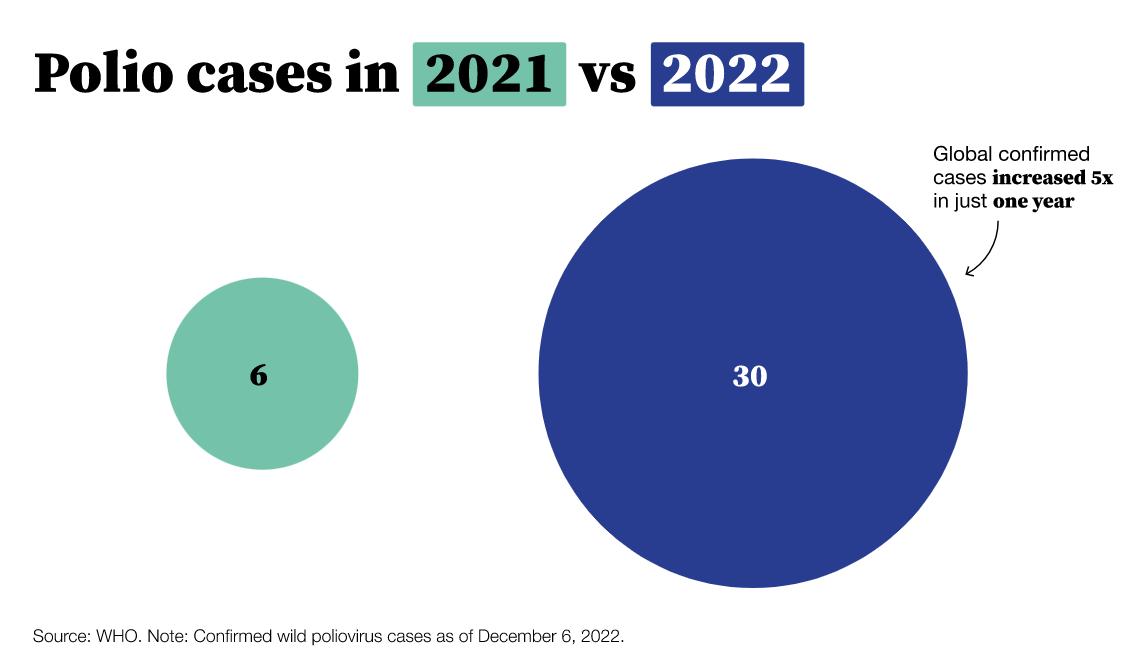
January 2023 - D6330 , 2020 Page 14
Here are my own reasons for being optimistic. Despite this recent comeback, the momentum is still on our side: Polio cases are down 99.9% over the past three decades. We now have a new vaccine, called nOPV2, that will prevent outbreaks of polio variants. As of November, more than 500 million doses of nOPV2 had been administered in 23 countries. And a more detailed look at the situation in Pakistan and Afghanistan shows that while cases were up slightly this year, the overall trend is that entire families of wild poliovirus are being eliminated.
We’re also learning from the recent setbacks. In October, the group leading the eradication effort the Global Polio Eradication Initiative adopted a smart five-year strategy for overcoming the final obstacles to eradication. And donors stepped up to partially fund this new strategy.
In October the foundation announced a new $1.2 billion pledge, and pledges from other donors brought the total to $2.6 billion. There’s still a long way to go the commitments amount to a little more than half of what GPEI needs to finish the job but this was a fantastic start.
No update on polio would be complete without a big thank-you to Rotary International. They were part of this effort long before the Gates Foundation was. Since we became partners on eradication, we’ve jointly raised $1.8 billion for this work, and there’s more to come.
Rotarians also lead massive vaccination campaigns to reach children all over the world. Sometime in the next few years, when polio is finally eradicated, my first phone call will be to thank and congratulate the team at Rotary International.
Below left - When New York State had the first U.S. case of polio in nearly a decade, New Yorkers had to get immunized. (Ed JONES / AFP)
Below right - After the first polio case was detected in New York, the virus showed up in New York City’s sewage. (ANGELA WEISS/AFP)
Click here to read more.

January 2023 - D6330 , 2020 Page 15
This article focuses on efforts to provide routine immunization to children, including during the pandemic, highlighting how local healthcare workers are responding to various challenges.
Millions of children around the world did not get routine vaccines as a result of disruptions and disinformation caused by the COVID-19 pandemic. In the Democratic Republic of the Congo, these setbacks threaten to undo years of public health advances. Special correspondent Benedict Moran and video journalist Jorgen Samso report.
• Judy Woodruff: Millions of children around the world did not get routine vaccines as a result of disruptions and disinformation caused by the COVID-19 pandemic.
That is the largest sustained decline in childhood immunizations in a generation, according to the United Nations. In some countries, as in the Democratic Republic of the Congo, these setbacks threaten to undo years of public health advances.

Special correspondent Benedict Moran and video journalist Jorgen Samso report.
• Benedict Moran: In this health center on the outskirts of Kinshasa, community health workers are preparing to administer a round of routine vaccinations.
In Africa alone, every year, more than 800,000 lives are saved because of routine vaccines, according to the World Health Organization. Though a painful part of growing up, vaccines are one of the most successful public health interventions. It is the safest way to protect children from life-threatening diseases like polio, measles, rubella and tetanus.
But over the last two years, vaccination rates are plummeting, not just here, but across the planet. And doctors are worried. For the first time in a generation, last year, more than 25 million children missed out on basic vaccines. Health workers fear that, without focusing greater efforts on increasing the rate of childhood vaccination, many diseases that were once under control may return.
In July, the U.N.'s World Health Organization sounded the alarm.
Click here to read the entire article.
January 2023 - D6330 , 2020 Page 16
2022 may well go down in history as the year of contrasts in the global effort to eradicate polio.
At first glance, with polio detections in places such as New York and London and an increase in cases in Pakistan, it may seem that the effort is backsliding. And while any detection of any poliovirus is a setback particularly in areas where the disease had been long gone, like southeast Africa a deeper analysis reveals a more encouraging story: 2022 saw perhaps some of the most significant progress in the programme’s history, and has set up the global polio effort for a unique opportunity to achieve success in 2023.
Endemic wild poliovirus transmission in both Pakistan and Afghanistan is becoming increasingly geographically restricted, with fewer virus lineages remaining active.

The bulk of variant type 2 polio (cVDPV2) cases are also becoming more restricted, with 90% of all global cases restricted to three ‘consequential geographies’ (eastern Democratic Republic of Congo, northern Yemen and northern Nigeria).
And emergency outbreak response efforts to wild poliovirus type 1 in southeast Africa continue to gain momentum.
To evaluate this progress as 2022 draws to a close, independent technical expert and advisory groups are taking an in-depth look at the prevailing epidemiology, assessing impact of eradication efforts and putting forth key strategic approaches to enable an all-out effort against the virus in the first half of 2023.
The first of these groups met in early October, when the Technical Advisory Group (TAG) for Pakistan reviewed vaccination coverage and disease surveillance across the country. Despite the increase in new cases, the TAG found the outbreak to be extremely geographically confined, thanks to concerted emergency efforts led by the government and supported by partners. Today, polio transmission is restricted to the six districts of southern Khyber Pakhtunkhwa province a fraction of the country’s 180 districts. Encouragingly, the virus has not re-established a foothold outside the core outbreak zone, meaning the traditional reservoirs of Karachi, Peshawar and Quetta are no longer endemic to the virus, a historical first.
More good news came out of the TAG’s analysis of the genetic biodiversity of virus transmission. In 2020, Pakistan had 11 separate chains of virus transmission. This was reduced to four in 2021, and today, just one family of the virus remains in the country. The approaches being implemented in Pakistan are working despite some serious challenges.
At right, children displaying their “purple pinkies.”
Click here to read more from this article about the positive news regarding Polio Eradication efforts.
January 2023 - D6330 , 2020 Page 17
PAUL HARRIS SOCIETY
The Paul Harris Society recognizes Rotary members and friends of The Rotary Foundation who elect to contribute $1,000 or more each year to the Annual Fund, PolioPlus Fund, or approved global grants.
The purpose of the Paul Harris Society is to honor and thank individuals for their generous, ongoing support of The Rotary Foundation.
What your giving supports
Supporting families and changing lives! By giving from your heart each and every year, you’ll support families and change lives. Paul Harris Society gifts have helped provide:
• Vocational training for teachers establishing an early childhood education center in South Africa
• Water filters, toilets, and hygiene training to prevent fluorosis, diarrhea, and other diseases in India
• A scholarship for a medical professional in Italy to research treatments that minimize mortality rates among premature babies
• Peace-building seminars for 200 teachers and 1,300 students in Uganda
• Treated mosquito nets and medical services that prevent malaria in Mali
In District 6330, Rotarian Jamie Pole is the District Paul Harris Society Chair.
• In District 6330 we are proud to have over 116 members in our Paul Harris Society.

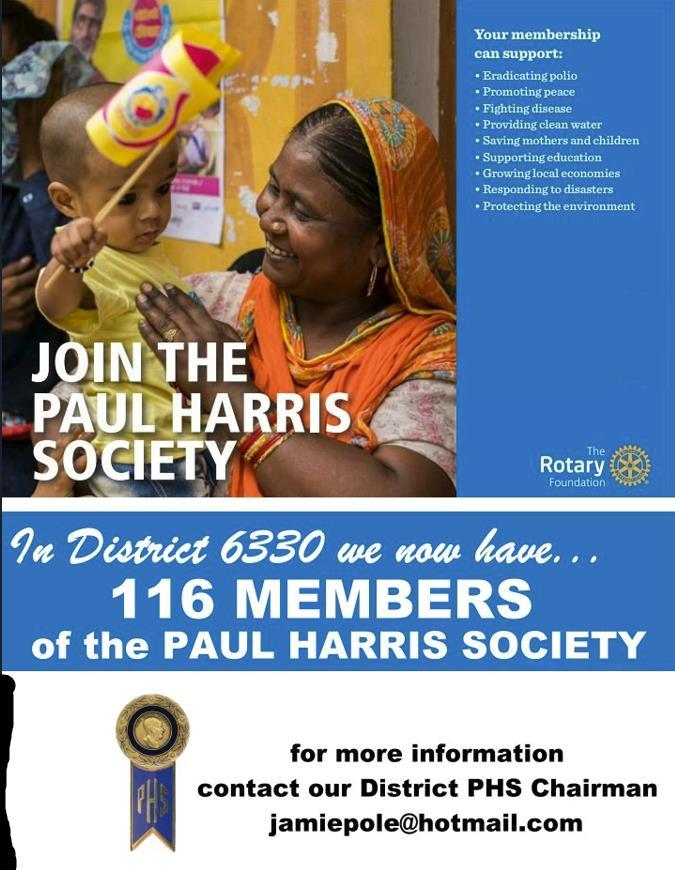
• We have over 32 of our clubs that now have members in the Paul Harris Society.
• For information please contact our District 6330 Co-ordinator, Jamie Pole
January 2023 - D6330 , 2020 Page 18
ROTARY INTERNATIONAL PRESIDENT-ELECT GORDON R. MCINALLY
3
R. Gordon R. McInally President-elect 2022-23 Rotary Club of South Queensferry West Lothian, Scotland
R. Gordon R. McInally is president-elect of Rotary International and will be the Rotary International President beginning July 2023.
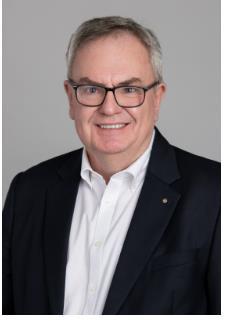
He was educated at the Royal High School in Edinburgh and at the University of Dundee, where he earned his graduate degree in dental surgery. He operated his own dental practice in Edinburgh until 2016. Gordon was chair of the East of Scotland branch of the British Paedodontic Society and has held various academic positions. He has also served as a presbytery elder, chair of the Queensferry parish congregational board, and commissioner to the general assembly of the Church of Scotland.
Gordon joined Rotary in 1984 at age 26. A member of the Rotary Club of South Queensferry, he has served as president and vice president of Rotary International in Great Britain and Ireland (RIBI). He has also served RI as a director and on several committees, including as an adviser to the 2022 Houston Convention Committee and chair of the Operations Review Committee.
Gordon says he looks forward to working with members to build new Rotary clubs and groups. “My vision is that Rotary should exist everywhere in a style to suit everyone who has the desire to be part of us and to help us do good in the world,” he says.
Gordon is a patron of the UK-based non-profit Hope and Homes for Children and led a partnership between that organization and RIBI to support children in Rwanda who had been orphaned in the genocide there. He is a patron of Trade-Aid, an initiative of the Rotary Club of Grantham Kesteven, Lincolnshire, England, that provides sustainable humanitarian aid to individuals, families, and businesses in the developing world. He is also an ambassador for Bipolar UK, a national mental health organization.
In his free time, Gordon enjoys rugby, good food and wine, and stick dressing, the traditional Scottish craft of making walking sticks.
Gordon describes The Rotary Foundation as “the fuel that provides the energy to do Rotary service.” He and his spouse, Heather, also a Rotarian, are Paul Harris Fellows, Major Donors, and Benefactors of The Rotary Foundation. They are also members of the Bequest Society. Gordon wishes to dedicate his presidency to making the world a better place for his granddaughters, Ivy and Florence, to live and thrive.
3 https://my.rotary.org/en/news-media/office-president/ri-president-elect
January 2023 - D6330 , 2020 Page 19
The Beginnings of Rotary
from last month
Rotary from 1945 Onwards
Rotary clubs in Eastern Europe and pother communist-regime nations were disbanded by 1945-46, but new Rotary clubs were organized in many other countries. By the time of the national independence movements in Africa and Asia, the new nations already had Rotary clubs. After the relaxation of government control of community groups in Russia and former Soviet satellite nations, Rotarians were welcomed as club organizers, and clubs were formed in those countries, beginning with the Moscow club of 1990.
As of 2013, Rotary had more than 1.2 million members in over 34,555 clubs in over 200 coungries and geographical areas.

Women in Rotary
From 1905 until the 19802, women were not allowed membership in Rotary Clubs, although Rotarian spouses, including Paul Harris’ wife, were often members of the similar “Inner Wheel” Club. Women did play some roles, and Paul Harris’ wife made numerous speeches. In 1963, it was noted that the Rotary practice of involving wives in club activities had helped to break down female seclusion in some countries. Clubs such as Rotary had long been predated by women’s voluntary organizations, which started in the United States as early as 1790.
The first Irish Clubs discussed admitting women as members in 1912, but the proposal floundered over issues of social class.
Gender equity in Rotary moved beyond the theoretical question when, in 1976, the Rotary Club of Duarte in Duarte, California, admitted three women as members. After this club refused to remove the women from membership, in 1978 Rotary International revoked the Club’s charter. The Duarte Club filed suit in the California courts, claiming that Rotary Clubs are business establishments subject to regulation under California’s Unruh Civil Rights Act, which bans discrimination based on race, gender, religion or ethnic origin. Rotary International then appealed the decision to the U.S. Supreme Court. The RI attorney argued [the decision] threatens to force us to take in everyone, “like a motel.”
The Duarte Club was not alone in opposing RI leadership; the Seattle-International District Club unanimously voted to admit women in 1986. The United States Supreme Court, on May 4, 1987, confirmed the Californian decision. Rotary International then removed the gender requirements from its requirements for club charters, and most clubs in most countries have opted to include women as members of rotary Clubs.
The first female club president to be elected was Silvia Whitlock of the Rotary Club of Duarte, California, in 1987. By 2007, there was a female trustee of Rotary’s charitable wing, The Rotary Foundation, while female district governors and club presidents were common. Women currently account for 15 percent of international Rotary membership (22 percent in North America). And in 2022-23, we have the first female Rotary International President - Jennifer Jones!
January 2023 - D6330 , 2020 Page 20
– continued
The change of the second Rotarian motto in 2004 from “He profits most who serves best” to “They profit most who serve best,” 99 years after its foundation, illustrates the move to general acceptance of women members in Rotary. In 2010, once again the motto was changed to, “One Profits Most Who Serves Best” which is the current wording used today.
Rotary Anns
In many Rotary Clubs throughout the world, wives of male members are affectionately called “Rotary Anns.” This designation was never one of disparagement, but rather grew out of an interesting historical occasion.
In 1914, San Francisco Rotarians boarded a special train to attend the Rotary convention being held in Houston. In those days, few wives attended Rotary events, and until the train stopped in Los Angeles, the only woman aboard was the wife of Rotarian Bru Brunnier. As the train picked up additional convention-bound delegates, Mrs. Ann Brunnier was introduced as the Rotarian’s Ann. This title soon became “Rotary Ann.”
Since the clubs of the West were inviting the Rotarians to hold their next convention in San Francisco, a number of songs and stunts were organized which should be performed in Houston. One of the Rotarians wrote a “Rotary Ann” chant. On the train’s arrival at the Houston depot, a delegation greeted the West Coast Rotarians. One of the greeters was Guy Gundaker of Philadelphia, whose wife was also named Ann. During the rousing demonstration, someone started the Rotary Ann chant. The two petite ladies, Ann Brunnier and Ann Gundaker, were hoisted to the men’s shoulders and paraded about the hall. The group loved the title given to the two women named Ann. Immediately the same term of endearment was used for all of the wives in attendance, and the name “Rotary Ann” was here to stay.
Guy Gundaker became President of Rotary International in 1923 and Bru Brunnier was elected President in 1952. Thus, each of the two original “Rotary Anns” became the “First Lady of Rotary Interntational.”
Very few clubs have “Rotary Anns” now but many have Partners Organizations; some are still called “Inner Wheel.” The words “Rotary Ann” can be heard on rare occasions, and now you know where they came from.
Source: https://rotary1.org/101-things-about-rotary/

January 2023 - D6330 , 2020 Page 21
As a global organization that operates in nearly every country in the world and deals in 29 currencies, Rotary takes stewardship of its funds seriously.
Our money is spent on life-changing, sustainable grants, as well as programs and services that support our members’ transformative work. We have invested $3 billion in thousands of projects over the past 100 years.
Financial structure

The Rotary Foundation is organized as a public charity operated exclusively for charitable purposes and governed by a Board of Trustees. The operations of Rotary International, a member organization, are overseen by its Board of Directors.
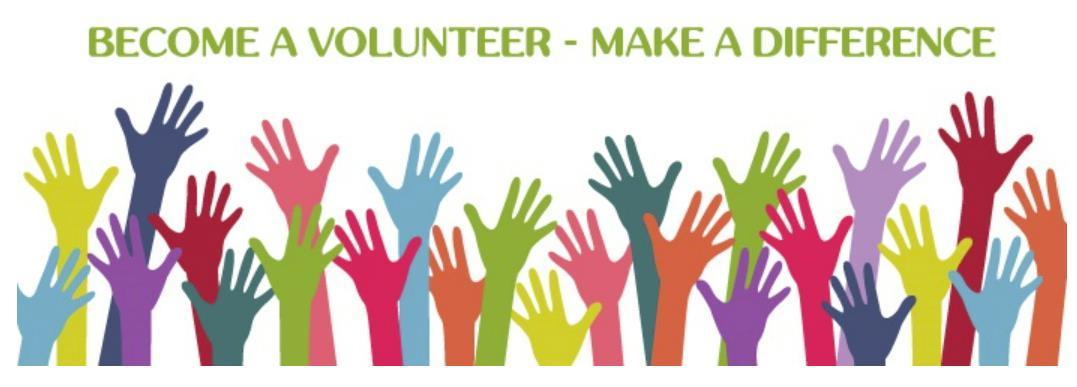

The headquarters of Rotary International and The Rotary Foundation are in Evanston, Illinois, USA. We have associate foundations in Australia, Brazil, Canada, Germany, India, Japan, Korea, and the United Kingdom.
Financial reports
We publish an annual report, audited financial statements, and our federal tax returns each year. Rotary International and The Rotary Foundation of Rotary International are separate entities with distinct reporting requirements. Under United States tax law, they are both tax-exempt organizations.
Click here to read the rest of the article.
January 2023 - D6330 , 2020 Page 22
How do you want to get involved in the causes you’re most passionate about?
4
A GUIDE TO THE UPDATED ROTARY FOUNDATION FUNDING MODEL
The amount of money The Rotary Foundation has awarded annually in global grants has more than doubled since the grants were introduced: from $47.3 million in 2013–14 to $95.6 million in 2019–20. Yet demand for global grants is so high that it has outpaced Annual Fund contributions, which means that not all eligible global grant requests are able to receive funding.
To ensure that the Foundation can fund as many global grants as possible in the future, the trustees of The Rotary Foundation have approved policy changes effective July 1. The changes will have a big impact on the Foundation’s ability to support more large-scale, sustainable projects for years to come. Read on to learn more.
Our funds: A glossary
Annual Fund-SHARE is the primary source of funding for a broad range of local and international Rotary Foundation activities. Every Rotarian, Every Year is the initiative to encourage support for the Foundation’s Annual Fund. It encourages every Rotarian to contribute to the Annual Fund every year. Contributions to Annual Fund-SHARE from Rotary members and other donors are directed into two subfunds: the World Fund and District Designated Funds. Through the SHARE system, contributions to The Rotary Foundation are transformed into grants.
The World Fund provides funding for our highest-priority activities around the globe. A percentage of SHARE-designated contributions is applied to the World Fund. The Foundation uses the World Fund to pay for grant and programme opportunities available to all Rotary districts, including PolioPlus, Rotary Peace Centres, Programmes of Scale grants, global grants and more.
District Designated Funds (DDF) can be used by districts to pay for Foundation, club and district projects that a club and others in the district choose. Districts may use up to half of their DDF to fund district grants. The remainder may be used for global grants or donated to Polio Plus, the peace centres, or another district.
The Endowment Fund, financed by cash gifts and bequests left by Rotary members and their families, ensures the long-term viability of the Foundation and its grants and programmes. Spendable earnings from theEndowment enable the Foundation to expand existing activities and underwrite new ones. Contributions are invested in perpetuity: A percentage of the total value of the fund is directed annually to Foundation grants and programmes.
Five-year limit on DDF rollover
Donors contribute to the Annual Fund with the expectation that these donations will be used to help communities in the near term. But the amount of DDF rolled over from one year to the next remains high.
4 https://rotarynewsonline.org/a-guide-to-the-updated-rotary-foundation-funding-model/
January 2023 - D6330 , 2020 Page 23
For example, on July 1, 2020, $48.8 million in DDF was unused and rolled over from the preceding Rotary year.

Starting on July 1, 2026, and at the end of each Rotary year thereafter, DDF amounts that have been held for five years or more must be used.
Unused DDF can be applied to the Disaster Response Fund, the Endowment Fund, PolioPlus, the Rotary Peace Centers, or the World Fund, at the district’s discretion.
If no fund is selected by the district, the rollover will default to the World Fund.
Question below put to PRIP John Germ, Trustee Chair (2021-22)
What is the most important thing for Rotarians to know about the Foundation’s funding model?

The Rotary Foundation Trustees have three responsibilities:
• one, to raise money
• two, to invest money
• and three, to spend money
Right now (July 2021) we’re about $17 million per year short. We have to increase funding. It’s not just a funding model. We have to have money there in order to invest it and spend it.
Click here to read the full article.
January 2023 - D6330 , 2020 Page 24
GETTING TO KNOW THE ROTARY FOUNDATION TRUSTEES
The last of 15 featured this month
The Board of Trustees manages the business of The Rotary Foundation, the charitable arm of our organization that funds service activities. The RI president-elect nominates the trustees, who are elected by the RI Board to four-year terms.
Greg E. Podd Trustee 2022-26
Rotary Club of Evergreen, Colorado,
U.S.A.
Greg is a retired Certified Public Accountant and Personal Financial Specialist who opened his own firm in 1979. During his career, he wrote four professional continuing education accounting and finance courses and was a keynote speaker at five national conferences. Greg has taught many courses as a guest professor in the Master’s-Degree-in-Taxation program at Arizona State University and has made presentations to more than 20,000 CPAs and chartered accountants worldwide. He was also president and owner of a firm that specialized in metal fabrication for the telecommunications industry and of an international health care software development firm.
Greg joined Rotary in 1982. He has served Rotary International as Vice-President and Director. F During his time on the Board of Directors, he chaired committees including the Audit Committee and the Board Council on Legislation Advisory Committee. He also served on the Operation Review Committee and The Rotary Foundation’s Investment Committee, among others. Other roles he’s held include training leader, RI President’s representative, and representative to the Council on Legislation.
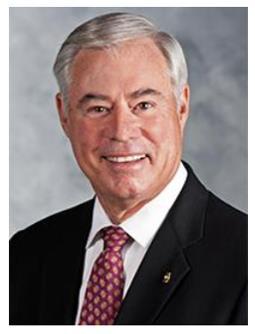
As a Rotary Foundation major gifts adviser, Greg organized his district’s Million Dollar Dinner, which raised more than $3.1 million in one night. He enjoys applying his professional knowledge a skills to help Rotary’s club, district, and zone leaders resolve funding questions. He says, “There is an education gap out there dealing with the finances of Rotary at all levels, and I’m glad to have served as a go-to person for questions.”
Greg has been active in numerous local, regional, and national professional organizations, community groups, and charities, including as a treasure and board and committee member.
Greg has received the Service Above Self Award and The Rotary Foundation Citation for Meritorious Service. He and his spouse, Pam, are Major Donors and members of the Arch Klumph Society, Bequest Society, and Paul Harris Society.
the next page,
JOHN HEWKO General Secretary and Chief Executive Officer Rotary International and The Rotary Foundation
January 2023 - D6330 , 2020 Page 25
On
Introducing SOMEONE WE ALL SHOULD KNOW…
John Hewko Rotary Club of Kyiv, Ukraine
John Hewko is the General Secretary and Chief Executive Officer of Rotary International and The Rotary Foundation.5
From 2004 to 2009, Hewko was vice president for operations and compact development for the Millennium Challenge Corporation (MCC), a U.S. government agency established in 2004 to deliver foreign assistance to the world’s poorest countries. At MCC, he was the principal United States negotiator for foreign assistance agreements to 26 countries in Africa, Asia, South America, the Middle East, and the former Soviet Union.
During his tenure, he completed the negotiation of assistance agreements totaling $6.3 billion to 18 countries for infrastructure, agriculture, water and sanitation, health, and education projects.
Prior to joining MCC, Hewko was an international partner with the law firm Baker & McKenzie, specializing in international corporate transactions in emerging markets. He helped establish the firm’s Moscow office and was the managing partner of its offices in Kyiv and Prague.
While working in Ukraine in the early 1990s, Hewko assisted the working group that prepared the initial draft of the new Ukrainian post-Soviet constitution and was a charter member of the first Rotary club in Kyiv.
Hewko has been a public policy scholar at the Woodrow Wilson International Center for Scholars, an adjunct professor of law at Georgetown University, and a visiting scholar at the Carnegie Endowment for International Peace. He has published papers and articles in leading U.S. and international publications, and he has spoken extensively on political and business issues dealing with the former Soviet Union, Central Europe, Africa, and Latin America. He is also a member of the Council of Foreign Relations.
Hewko holds a law degree from Harvard University, a Master’s degree in modern history from Oxford University (where he studied as a Marshall Scholar), and a Bachelor’s in government and Soviet studies from Hamilton College in New York.
As general secretary, Hewko leads a diverse staff of 800 at Rotary International’s World Headquarters in Evanston, Illinois, USA, and seven international offices. He and his partner, Marga, are major donors to the Foundation. They live in Evanston.

Follow @johnhewko on Twitter. Visit John Hewko on Facebook.
5 https://my.rotary.org/en/general-secretary-and-chief-executive-officer
January 2023 - D6330 , 2020 Page 26
ROTARY IN UKRAINE
Click here to watch a short video on Rotary’s help to Ukraine.
Sponsor Ukrainian refugees

Rotary is collaborating with Welcome.US, an organization working to engage more Americans in welcoming newcomers, with a focus on sponsoring refugees.
Through Uniting for Ukraine, Rotary and Rotaract clubs and members in the U.S. can sponsor a person or a family that has fled the war and help them relocate to the U.S.
To sponsor a Ukrainian refugee family:
Sign up to be a sponsor today.
Learn more about sponsorship by downloading the Rotary-Welcome.US flyer
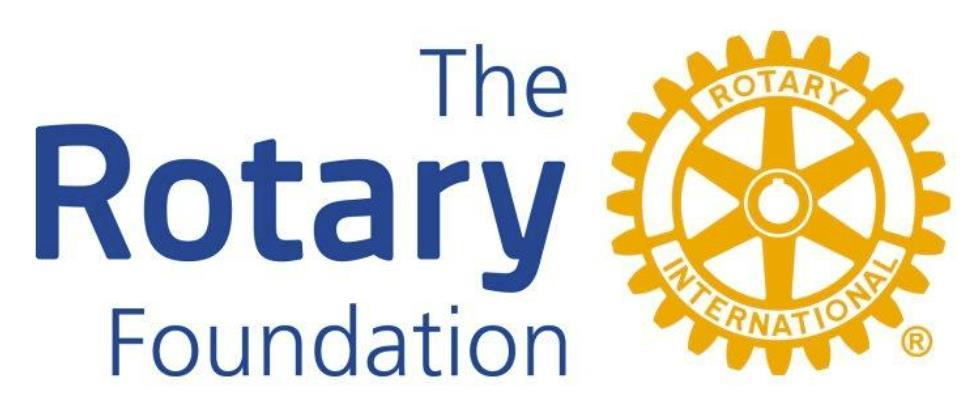
If you have further questions, write to trf.welcome@rotary.org.
Find more resources and answers to some common questions on the Welcome.US website.

January 2023 - D6330 , 2020 Page 27
The Rotary Foundation – the Engine that runs Rotary!
WAYS TO GIVE TO THE ROTARY FOUNDATION
Your donation changes lives! and this information bears repeating…
There are numerous ways to support The Rotary Foundation.
Every amount contributed to The Rotary Foundation is spent in support of humanitarian, educational, and cultural programs and their operations. Clubs and districts apply for and receive Foundation grants to carry out worthy projects worldwide.

Here are a few of the ways that your contribution can make a difference:
• $100 can buy textbooks for one elementary school in Zambia
• $5,000 can buy vaccine to immunize 10,000 children against polio
• $24,000 can buy an academic-year Rotary Foundation Ambassadorial Scholarship
• $100,000 can buy funding for two to complete a two-year graduate program for a Rotary World Peace Fellow
Donate Online
When you donate online, you get to choose where your donations go. Support thousands of service projects our people of action are tackling around the world. Outright gifts can be made easily with The Rotary Foundation online contribution form.
This method expedites processing your tax receipt and Paul Harris Fellow recognition points. For online donations please visit https://www.rotary.org/en/donate
• Memorial or Tribute Donations: A gift to The Rotary Foundation is a meaningful way to honour a loved one.
• Recurring Donations: Rotary Direct allows you to help year-round by automatically giving each month, quarter, or year

January 2023 - D6330 , 2020 Page 28
FOUNDATION GRANTS – 7 AREAS OF FOCUS
Rotarians can get involved in various types of service –Club Service, Community Service, International Service, Vocational Service, New Generations (Youth) Service


January 2023 - D6330 , 2020 Page 29
COMING IN FEBRUARY


Today, over 70 million people are displaced as a result of conflict, violence, persecution, and human rights violations. Half of them are children.

We refuse to accept conflict as a way of life. Rotary projects provide training that fosters understanding and provides communities with the skills to resolve conflicts.
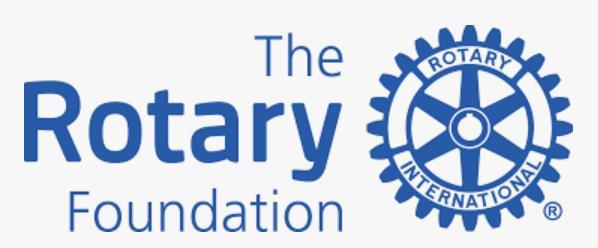

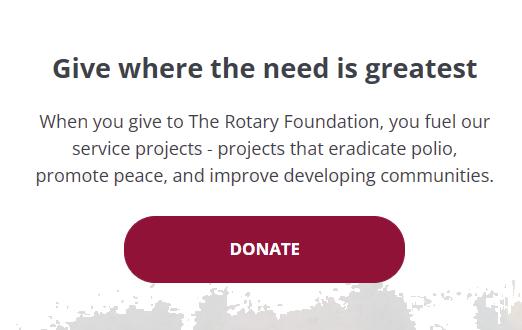
January 2023 - D6330 , 2020 Page 30
ROTARY’S CORE VALUES
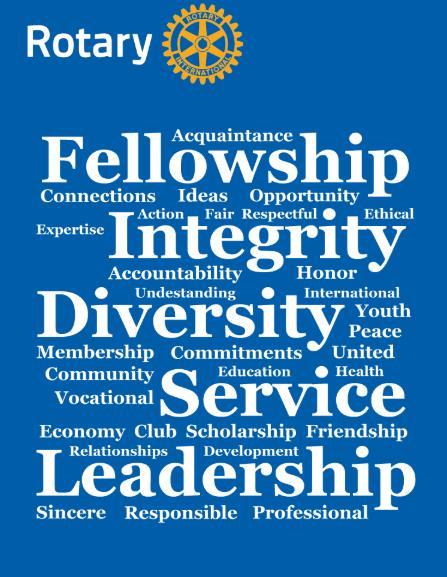
WHAT IS ROTARY?
Rotary International is an international service organization whose stated purpose is to bring business and professional leaders together to provide humanitarian service and to advance goodwill and peace around the world. It is a non-political and non-religious organization.
Rotarians can get involved in various types of service –Club Service, Community Service, International Service, Vocational Service

January 2023 - D6330 , 2020 Page 31
Click the 4-way test above to hear the Four-Way Test by RC of Saskatoon Nutana
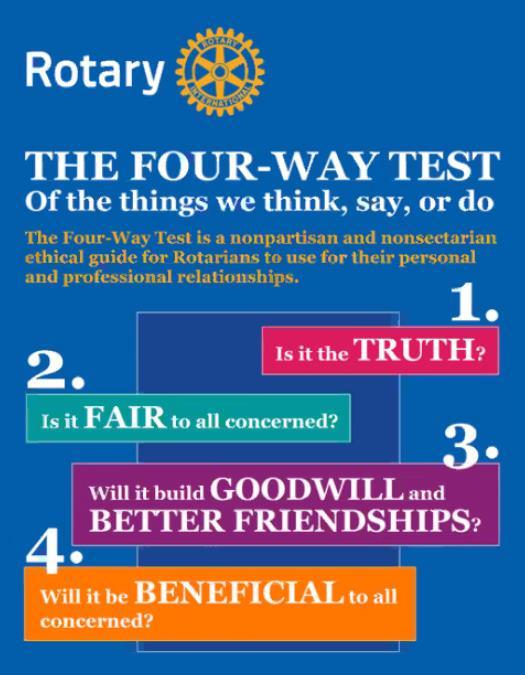

January 2023 - D6330 , 2020 Page 32
THE ROTARY FOUNDATION EREY – Every Rotarian Every Year
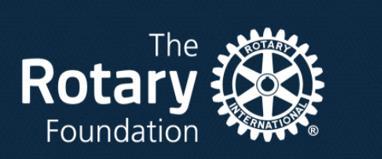
Click here for a short video.

Our Every Rotarian, Every Year (EREY) initiative encourages all Rotary club members to contribute something each year to The Rotary Foundation. We hope that you can consider at least $100 USD every year to help us reach our goal to support the Rotary Foundation financially each year.
Sustaining member. One who contributes $100 USD every year is a Sustaining Member. With EREY, we encourage you to contribute an amount you can afford every year.
ROTARY BEQUEST SOCIETY
What is a Rotary Foundation Bequest Society Member?
Those who have made commitments for future gifts of $10,000 or more to The Rotary Foundation are invited to join the Bequest Society.
Donors may elect to receive various benefits and recognition pieces commemorating their commitment at each new recognition level, including pins, crystals, named funds, and special seating at the Rotary International Convention.
A bequest gift of at least $10,000 in your name to The Rotary Foundation creates a legacy of your generosity and compassion as you are helping many people live better lives around the world.
Today there are over 18,000 Bequest Society Members worldwide.

Will you join them by leaving a gift to Rotary in your estate? Contact the Rotary Foundation’s Planned Giving team

January 2023 - D6330 , 2020 Page 33
But no -
When tomorrow comes, this day will be gone forever. In its place is something that you have left behind. Let it be something good.


January 2023 - D6330 , 2020 Page 34






















































































